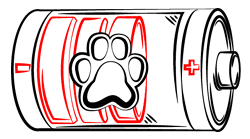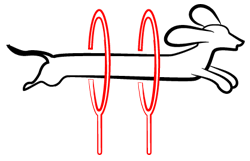
Paws ‘N’ Pups Quickview
Size
| Energy Level
| Trainability
| Paws ‘N’ Pups Rank
|
Characteristics
| Physical Characteristics: Height: 14-16” Weight: 20-25 lbs. Energy Level: Moderate | Colors: The American Kennel Club recognizes the Kooikerhondje in the following colors:
|
Health & Longevity
Average Life Span: 12-15 years
The Kooikerhondje, nicknamed the Kooiker, is a generally healthy dog, although he does have some potential health issues.
Hip dysplasia and patellar luxation may impact some Kooikers. Hip dysplasia occurs when a malformed hip joint does not allow the thighbone to fit properly into place, often leading to discomfort, pain, and/or limping. In more severe cases, it can cause arthritis or even lameness, and surgery may be required. Dogs with hip dysplasia should not breed, so ensure your prospective puppy’s parents have no history of the condition. Although it is hereditary, hip dysplasia can be triggered by rapid weight gain or injury. Patellar luxation involves the knee joint sliding easily into and out of place. This dislocation of the knee similarly can cause limping, pain, and lameness, which is often intermittent. Surgery can correct patellar luxation, but it may not be possible in some cases.
A blood clotting disease known as Von Willebrand disease has been recorded in some Kooikerhondjes. The disease is caused by a deficiency in the von Willebrand factor, which aids in blood clotting, resulting in excessive or uncontrolled bleeding, sometimes even from minor cuts or injuries.
Hereditary Necrotizing Myelopathy (HCM) is another possibility for the Kooiker, and it is a degenerative spinal cord disease. Sensation and mobility are gradually affected, and paralysis is likely to result within 3-6 months. There is treatment for the disease’s symptoms, but it often only slows the condition’s progress, and HCM is ultimately fatal. Most dogs with the condition are euthanized to prevent a long, painful, and ultimately unsuccessful battle.
The Kooiker may also experience eye problems such as retinal dysplasia and distichiasis. Retinal dysplasia refers to the formation of clumps in the eye’s retinal tissue. There are three types of retinal dysplasia, the most severe of which results in detachment of the retina and blindness. The condition is not progressive, but there is currently no treatment. Distichiasis is the growth of eyelashes in unusual locations on the eye or in abnormal directions, with some dogs showing no signs of discomfort and others experiencing redness, irritation, and excessive tearing. Inflammation, pain, and corneal ulcers can result. Some affected dogs may require no treatment, while others can be treated with eye lubricants or corrective surgery.
The Kooikerhondje may also experience kidney disease and epilepsy.
On average, the Kooiker has a lifespan of 12-15 years, and some have been known to live as long as 18 years.
Temperament & Train-ability
The Kooikerhondje originated in the Netherlands as a hunting dog, and he is an athletic, alert, and somewhat independent dog. He is also easygoing, friendly, and cheerful, and he makes an extremely devoted family companion.
The Kooiker can live in an apartment as long as he gets daily exercise, and his exercise needs are somewhat adaptable. 30-45 minutes of daily exercise are recommended, which can be in the form of hikes, leisurely walks or just playing around. At minimum, a couple of thirty-minute walks and some energetic playtime each day should be enough for the Kooiker. He is prone to obesity, so ensure that he is not lazing around all day. The Kooikerhondje does not like extremely hot or extremely cold temperatures, so try to keep him indoors in such conditions. If he does go outside in very cold weather, have him wear a dog sweater.
Generally calm and relaxed inside the home, the Kooiker is happiest when spending time with his people. He can get along well with children, pets, and other dogs alike if he is raised with them or is introduced to them while still young. It is important to teach children to respect the Kooiker, as well as his space and belongings, and he does best with older children who already understand how to properly behave around dogs. He has a strong prey drive and may pursue smaller animals, particularly birds, and he can be territorial at times. Although he is friendly and affectionate with people he knows, the Kooikerhondje tends to be reserved with strangers. He is a good watch dog who typically barks only when he feels it is needed, although some may be a bit more vocal.
Although the Kooikerhondje is intelligent and typically eager to learn, he is not recommended for a first-time dog owner. If you are lenient or are not absolutely consistent in enforcing your rules and expectations, the Kooikerhondje will take advantage. You need to establish yourself as dominant and he will be obedient. Use positive reinforcement such as treats, praise, and extra playtime, and do not be overly harsh to the Kooiker.
Grooming
The Kooikerhondje will generally require weekly brushing, although more may be needed during shedding season. He has a waterproof coat that can repel dirt, and he should be bathed only as needed to avoid interfering with the coat’s water and dirt repelling capabilities.
Trim his nails when they are long enough to touch the floor in order to prevent overgrowth and cracking. Check his ears regularly for signs of infection such as redness, tenderness, and odor. Brush his ears at least 2-3 times weekly to prevent bad breath and maintain healthy gums.
Diet
On average, the Kooiker should consume 1.5-2 cups of high quality dry dog food daily, preferably divided into two smaller meals.
This breed can become overweight if overly fed or not exercised properly, so monitor his weight and be sure not to give him excessive treats or extra helpings of food.
Clean, fresh drinking water should be accessible to the Kooiker at all times, particularly in hot weather.
Looking for a Kooikerhondje?
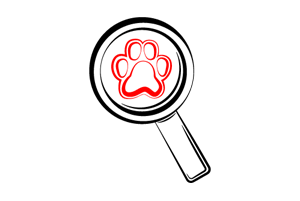 Find A Kooikerhondje Breeder | 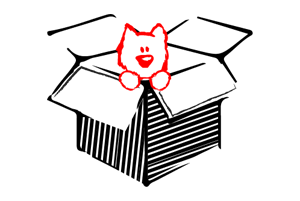 Kooikerhondje Puppies For Sale | 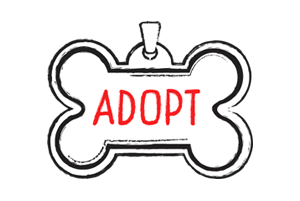 Adopt A Kooikerhondje |
Cost
Although the Kooikerhondje is a rare breed, prices typically range from $600-$800. Prices vary according to factors such as gender, breeder location, and pedigree.
If you are able to adopt a Kooiker, expect to pay up to $150 -$300 in adoption fees, depending on your location.
Paws ‘N’ Pups Ranking
Paws ‘N’ Pups ranks every breed out of 4 with 1 being easiest to integrate into your life and 4 being the toughest – The lower the ranking the better.
Ranking takes into account a few basic factors including cost, skill level needed, high vs low maintenance and how critical regular training is to success. The Kooikerhondje ranks a 3. His exercise needs are somewhat adaptable, and he can live in an apartment. However, he needs to be introduced early to children, dogs, and other pets in order to get along with them, and he is prone to obesity. He is also not recommended for a first-time dog owner because he can be difficult to train, and he is a rare breed who may require you to spend time on a waiting list.
Breeds Similar To Kooikerhondje
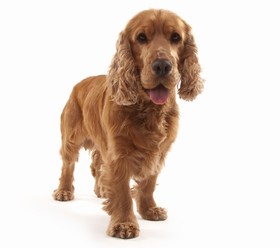 Cocker Spaniel | 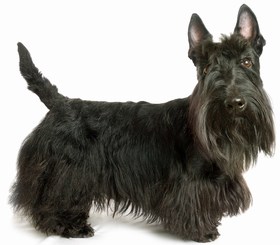 Scottish Terrier | 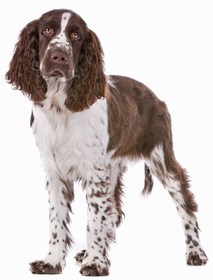 English Springer Spaniel | 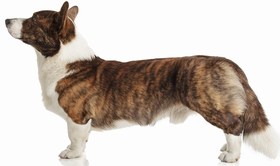 Cardigan Welsh Corgi |


